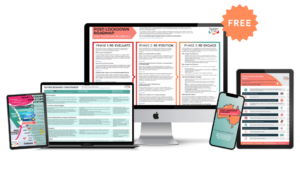What online content marketing tactics do you have in place to boost your e-commerce sales? Millions of people type billions of searches into engines like Google or ask their AI-enabled device for the answer every day. Online marketing is about getting a slice of that pie. You do it by getting seen on search engines and siphoning targeted customers to your website—more specifically, your online store.
You can’t rely on ads alone to generate all your traffic. With e-commerce retail sales on the rise, competition is at an all-time high. Online and content marketing tactics help your brand bring organic traffic in a way that has compounding returns. Below you will find eight tactics you can use to see higher e-commerce sales numbers through your online and content marketing efforts.
1. Ramp up your Video Marketing
Yes, blog posts are essential to boost your online presence. In saying this don’t underestimate the power of driving organic traffic with video. Short videos based on long-tail keyword research can put new eyes on your online store or booking platform month after month. Prioritise quality and professionalism, but the quantity just as significantly. The more video clips you can put out, the more you’ll see results from your video marketing efforts.
Be sure to link to your product store pages with any essential complementing videos that explain, educate and add value to your product, service or experience. Best videos to create are videos that describe or demonstrate the product/service you are promoting. When possible, sprinkle client testimonial or customer review videos, and you are winning.
YouTube is essential for getting found on Google. Post videos on your social media accounts, too, since it generally gets more engagement than static content.
Lastly, Live video on any social media platform including Facebook, Instagram, LinkedIn and Twitter yields even higher engagement rates, as there’s a certain appeal to being there with you and your business in real-time. Live streaming is an excellent relationship builder particularly beneficial when you’re launching a new product or pitching a promotional sale because it builds trust for your brand.
2. Have a Link Building Strategy with Your Blog
Having a link building strategy means having an internal linking strategy within your website and a different strategy for building backlinks.
Internal links are links to other pages on your website or posts on your blog. They should flow naturally in your blog posts, with relevant anchor text. A useful internal linking guide to follow is to include 1 to 3 links for every 1,000 words of text. The benefits of internal link building are helping your domain’s authority rank higher in search engines, which can optimise your site for more traffic.
In addition to this, it would be best if you also had a backlink strategy. Attain backlinks by reaching out to other business blogs or influential bloggers in your niche to ask if they’d feature you as a guest post author. For a guide on how to write a feature blog post check out the latest one, we created for Media Mortar on the Top 10 Tourism Marketing Trends to Focus on in 2021.
Taking on this practice gives you the chance to build domain authority by linking back to your website as a valuable piece of content related to your business, giving you domain authority, credibility and influence on search.
Another backlink tactic is to use publishers like Medium and LinkedIn Publisher, which allow you to publish on an authoritative domain and include your backlink. Taking on this strategy means publishing a blog post on one of these platforms first. Once your blog post is published, include links within the text sending readers to your website, and online store. Winning!
3. Segment and Personalise Your Email Marketing
Personalised content marketing funnels are shown to prime your email list for promotions by doubling down on what’s most relevant to them.
Instead of having just one bulk email list, make it more intimate for your leads. Filter them by what content they’ve shown interest in. One of the most popular email marketing systems widely used by many small businesses is MailChimp. Others more advanced tools include Hubspot, Salesforce or Active Campaign. Other ‘lead magnet’ and content funnel tools include tools like ClickFunnels and GetResponse. They’re able to track the content that brought each lead to sign up for your email list via your website. Then, it sends them emails tailored to and according to the segment, they fall into from their initial interest.
Of course, there’s more work on your part, considering you have to write custom emails for multiple groups within your list. Access to some of these platforms also requires a significant investment. You can write tour copy yourself or you can hire a copywriter to help you speed things up while also making your writing more effective. Setting a budget and making a plan always pays off, particularly since your leads will only see what’s most relevant to them, holding your interest in your brand.
4. Collect Customer Stories
If you can find customer stories about your products or services already out there on online reviews or social media, collect screenshots of them to publish on your website. If you collect emails for all your customers, you’ll be able to contact them for feedback. The easiest way is to have them fill out an anonymous feedback survey. Some great and effective tools to collect feedback from your customers include, SurveyMonkey, Google forms or Typeforms.
On the other hand, in-depth stories and testimonials can be more powerful. Tools like VideoAsk can help you capture video testimonials from your customers. Likewise, AudioAcrobat is a tool for recording audio-only customer testimonials. Sharing these stories in a marketing video further adds to your credibility to further compel new customers to take action on your offers and promotions.
5. Create Interactive Content
If you’re not already publishing interactive content on your eCommerce website, such as polls, quizzes and clickable infographics, it’s time to start. Interactive content gets more engagement than static content like blog posts, images and videos.
Clickable infographics, with animated data points, scroll-enabled navigation and other cutting-edge features, can help educate customers more effectively. Quizzes can assess a visitor’s strengths and weaknesses or match their personality with a product in your store. Personalised recommendations based on quiz results can be delivered by email, giving you another way to collect signups.
6. Using Discounts as Lead Magnets
Getting a website visitor onto your email list is a huge win for your business. It enables you to market to that visitor again and again right in their inbox.
Considering the benefits of email marketing for eCommerce, you might be wondering what you can use as a “lead magnet” to lure leads onto your email list. You can create content your target customer can glean value from. Or better yet, offer a discount for customers who join your email list.
By attracting leads from individuals who are more likely to purchase; you can begin to drive sales from first-time customers. Offering new customers with a 15% sitewide discount for signing up to your e-newsletter is a perfect example of excellent content marketing tactics and conversion strategy.
7. Post Buyer’s Guides to Your Blog
Buyer’s guides give you the chance to post many internal links to products in your online store. They’re simply posts that compare the attributes and the pros and cons of different products that are similar. Others detail what the reader should buy when they’re starting a business or hobby.
The idea is to offer your products as potential purchases; you might also compare them to your competitors’ products—another way to build brand trust, demonstrate authority and show off your unique selling points.
8. Have a Social Commerce Strategy
Social commerce is effectively e-commerce on social media platforms, typically accessed by mobile users. For example, Instagram and TikTok have ways businesses can embed links to their products. When you build a following for your brand or marketplace on social media, you can engage with your audience, other businesses and influencers on social platforms in a new way. Getting more of your social audience’s eyes on your page translates to more visits to your store. Well, that’s the goal anyway.
Some tips to get started with your social commerce journey:
- Start incorporating “shoppable” links in your content.
- Do live videos to answer questions and create useful content.
- Get inspiration from trending topics or from your competitors. These will all help you gain visibility and grow followership.
- Ask questions, run polls and engage by replying to other people’s posts to increase your engagement.
In Summary
All in all, content marketing tactics that grow your e-commerce business requires commitment in time resources and above all, effective online marketing.
Content marketing is one of the cheapest ways to get more traffic to your website. No matter what you sell, creating effective content can benefit and educate your target customers on what you do and more importantly, how you can help them. Content marketing captures your potential clients’ attention and enables you to take them on a journey with you to build a relationship with you and influence a sale.




